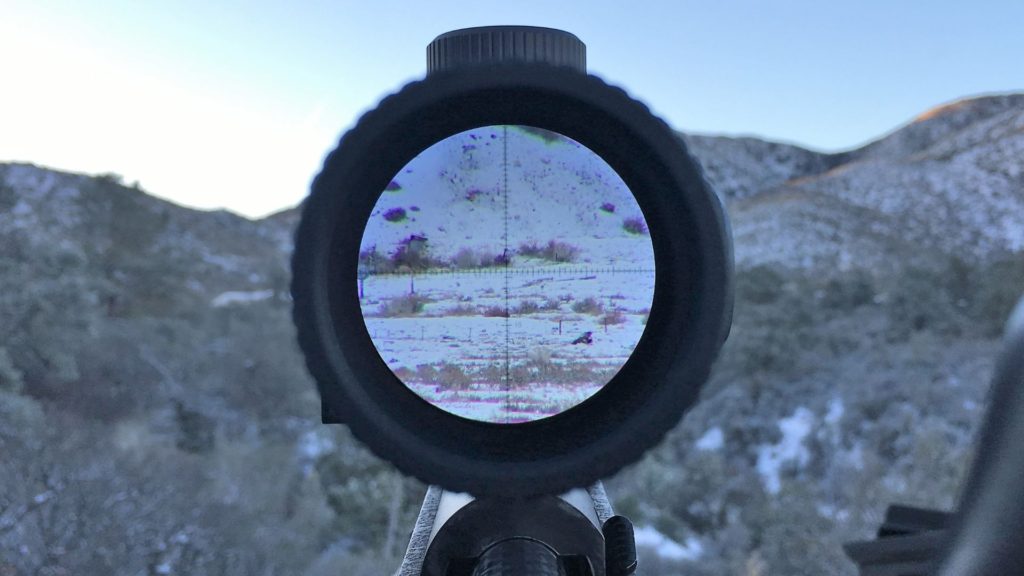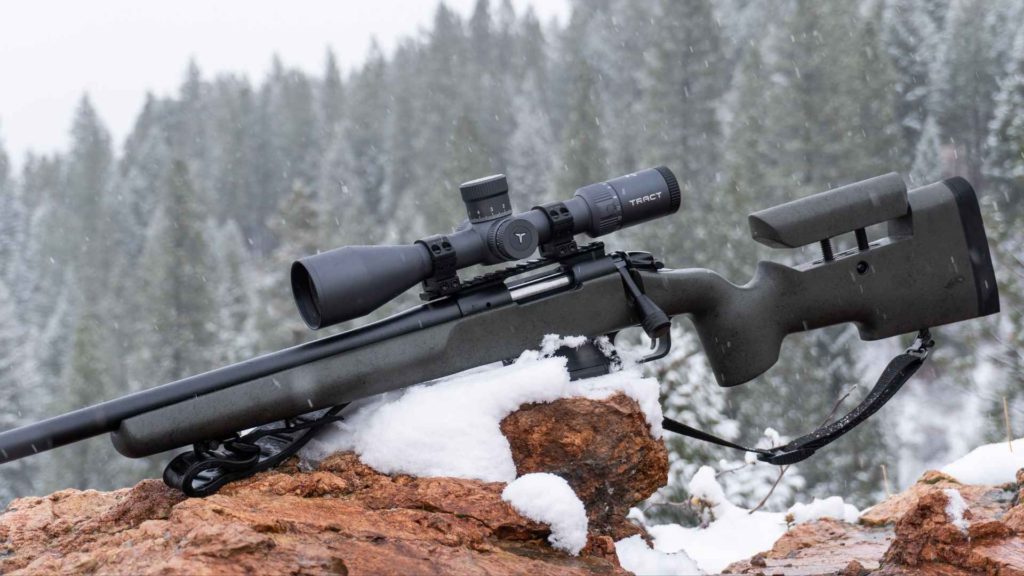Why We Use Argon Gas Versus Nitrogen
Why We Use Argon Gas Versus Nitrogen
Guest Author: Hampton Bourne
Why We Use Argon Gas Versus Nitrogen. Here is a little insight in to why we at TRACT use argon gas versus nitrogen and how we believe it makes a big difference in optics performance.
Years ago, I had recently started a new job. Times were tough, and the new job was not rising to my expectations. In those days I enjoyed the annual whitetail season, but it wasn’t my top priority in life. Due to the stresses of my new job, I decided that a morning in the deer stand without distractions would serve my soul well. So on the opening morning of rifle season I hitched up my gear and headed out.
I snuck in early before dark and waited for the sun to rise. I had lugged an old Ruger No. 1 to the stand. It wasn’t the most high-tech rifle that I owned, but it was my dad’s. I enjoyed the nostalgia of carrying it and from time to time, shooting it. In truth, I didn’t intend on pulling the trigger that morning.
Only a few minutes after daylight, I saw movement over my left shoulder. At first, I thought it was a doe. As the deer walked into the light I saw antlers – LOTS of antlers. At that time, I had not harvested any true trophies and this buck would have been a personal record.
I raised the No. 1 to my shoulder and laid my cheek on the stock, already thinking about where I’d hang this deer in my house. Except I never even got him in the crosshairs. Looking through the scope, all I could see was the silhouette of the buck through a foggy haze that was the inside of my optic. Naturally, I panicked. I pulled the gun down to wipe the scope. The buck grew nervous in the commotion and took off. For a guy who walked to the stand with no intention of shooting a deer, I was as dejected as possible.
What Causes Rifle Scopes to Fog?
When warm glass meets cold air, condensation can occur. This is why your windshield fogs over temperature changes. The same principle applies to rifle scopes, binoculars and spotting scopes. If the temperature inside the optic is different from the outside temperature, condensation can form on the inside of the lenses and blur your view. In addition, the humidity in the air can condense on the lenses and cause them to fog.
All TRACT Rifle Scopes are fully waterproof and fogproof using o-ring seals and purged with argon gas versus nitrogen, which is used in many competitors optics.
Traditionally, older scopes like the one on my dad’s Ruger were not gas-purged when they were built. Lower-quality optics today follow the same model. When these scopes are built, regular air would fill the inside of the tube when it was sealed. Normal air – the air we breathe – contains oxygen. On a molecular level, oxygen is very interactive with other elements or compounds, which is how water is made. Under the right circumstances, that air inside your rifle scope can condense and fog from the inside, and as the shooter, there’s nothing you can do about it.
How Do Companies Create Fog-proof Optics?
When fog-proof scopes are built, the first thing the company does is purge all the air out of the scope. This can be done with a variety of gasses, but nitrogen and argon are the most common.
Nitrogen and argon are both inert gasses – gasses that don’t easily react with other elements or changing conditions. If all other elements or compounds are pushed out of the interior of the scope and replaced with an inert gas, there are no other elements to bond with the nitrogen or argon atoms.
These gasses in their purest form do not fog under extreme temperature changes since there is no moisture or vapor created under normal conditions. Once the scope is filled with inert gas, it is hermetically sealed. O-rings are used to prevent any gasses from escaping or to prevent any impurities from entering inside the scope. So why the debate of argon gas versus nitrogen? Let’s talk about it.
Why Does TRACT use Argon Gas Versus Nitrogen?
Here is a little insight in to why we at TRACT use argon gas versus nitrogen and how we believe it makes a big difference in optics performance. There are several reasons in fact, starting with argon being a higher quality filler than nitrogen. For starters, argon is more tolerant of colder temperatures than nitrogen. Argon is three times heavier than nitrogen. The weight difference means that argon molecules take longer to move around inside the scope. This slower movement helps prevent moisture from forming on lens surfaces.

Even in the coldest of temperatures, your scope must perform with no exceptions.
Additionally, argon molecules are larger than nitrogen molecules. In the event of a gas leak, argon will leak from a scope at a slower rate than nitrogen. Leaks are generally only seen in the case of a fall or drop, but a narrowly damaged O-ring will be more forgiving when sealing argon instead of nitrogen.
Argon is more expensive as well. And the process to harvest it is more difficult than nitrogen, which is the most plentiful gas in the atmosphere.
Despite that, we believe that argon gas versus nitrogen produces a superior product. Some optics companies use nitrogen in their lower-priced optics and argon in their higher-end lines. In most cases, nitrogen-filled scopes will perform well enough. But when top quality is a concern, and argon gas versus nitrogen can make a difference, there is only one way to go.









